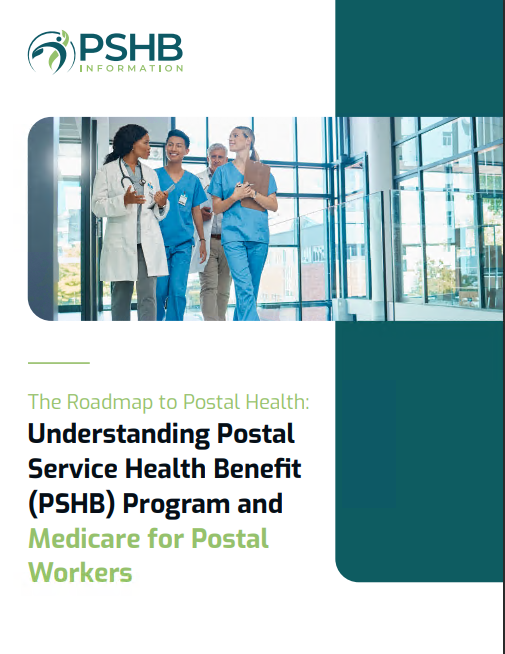Key Takeaways
-
Choosing between Self Plus One and Family enrollment in the PSHB Program directly affects your monthly costs, coverage access, and future flexibility.
-
USPS retirees must understand the enrollment rules, eligibility, and cost-sharing dynamics in 2025 to avoid being locked into an unsuitable plan type.
Understanding the PSHB Shift for USPS Retirees
Starting in 2025, all United States Postal Service (USPS) employees and retirees transition to the new Postal Service Health Benefits (PSHB) Program. This shift replaces the previous Federal Employees Health Benefits (FEHB) Program and brings several changes to enrollment procedures and plan structures.
One key decision point is whether to enroll in a Self Plus One plan or a Self and Family plan. While both options provide coverage for more than one person, they differ in scope, costs, and long-term flexibility.
What Self Plus One and Family Enrollment Mean in PSHB
Self Plus One
Self Plus One covers you and one eligible dependent. This could be a spouse, child under 26, or any other qualified dependent.
Self and Family
Self and Family extends coverage to you and all eligible family members. This includes multiple children, a spouse, and possibly a disabled adult child depending on plan allowances.
Who Can Be Covered Under Each Option
Eligibility guidelines remain similar to FEHB, but under PSHB, enrollment choices now carry additional significance, especially if Medicare Part B is involved.
-
Self Plus One: Only one family member may be covered along with the enrollee.
-
Self and Family: All eligible family members may be covered. This option is required if you have more than one dependent.
Children turning 26 in 2025 lose eligibility unless they qualify as disabled dependents. This may prompt some to shift from Self and Family to Self Plus One if other children are no longer eligible.
Cost Differences: Monthly Premiums and Out-of-Pocket Costs
Premiums for Self Plus One are not always significantly lower than Self and Family, as many might expect. In fact, depending on the plan structure, the cost difference between the two could be minimal—or occasionally higher for Self Plus One.
Factors influencing cost:
-
Government contribution formulas
-
Risk pool differences
-
Plan pricing policies
Even though Self Plus One limits coverage to two individuals, the reduced risk pool can sometimes mean higher per-person costs compared to a family plan. As a USPS retiree, don’t assume Self Plus One is automatically the cheaper option.
Out-of-pocket expenses, such as copayments, coinsurance, and deductibles, are generally plan-dependent and not affected by whether you choose Self Plus One or Self and Family. However, total annual expenses may be higher under Family if you have multiple users accessing care frequently.
Medicare Part B and PSHB: A Crucial Factor
In 2025, most Medicare-eligible USPS retirees must enroll in Medicare Part B to keep PSHB coverage. This requirement especially impacts your decision between plan types.
-
If both you and your spouse are Medicare-eligible and enrolled in Part B, a Self Plus One plan that integrates well with Medicare might offer sufficient coverage.
-
If only one person is Medicare-eligible or you have dependents under 65, you may benefit more from a Family plan.
Plans often coordinate with Medicare by waiving deductibles or reducing copays for enrollees with Part B, so understanding how integration works for your chosen plan is critical.
Life Changes and Flexibility of Each Option
Switching between Self Plus One and Family is only allowed during Open Season or after a qualifying life event. That means your current and future needs must be considered carefully.
Consider your future circumstances:
-
Do you expect a dependent to age out or move off your plan soon?
-
Are you anticipating a life change like marriage, divorce, or a grandchild joining your household?
If your family composition is likely to change, the broader coverage of a Family plan might provide better flexibility.
Enrollment Timing and Restrictions
In 2025, USPS retirees must actively enroll in a PSHB plan during the designated Open Season, which typically runs from November to December. If you do not select a plan, you will be auto-enrolled in a plan similar to your 2024 FEHB coverage, which may not be optimized for your current family size or health needs.
Enrollment decisions include selecting:
-
A PSHB plan (based on location and preference)
-
The type of enrollment: Self Only, Self Plus One, or Self and Family
You cannot switch between Self Plus One and Self and Family mid-year unless you experience a qualifying life event, such as the birth of a child or a spouse’s loss of other coverage.
Common Scenarios to Evaluate
To make a fully informed decision, think through the following scenarios:
-
You and your spouse are both retired and on Medicare: A Self Plus One plan may be adequate and cost-efficient.
-
You support grandchildren or dependents under 26: You likely need a Family plan.
-
You expect your only dependent to age out this year: You might consider switching to Self Plus One for next year.
Retiree-Specific Considerations in 2025
Unlike active USPS employees, retirees face unique decisions:
-
Retirees may no longer add family members outside of Open Season without a qualifying event.
-
PSHB premiums are typically deducted from annuity payments.
-
Once enrolled, failure to maintain Medicare Part B (if required) may result in loss of PSHB coverage.
For retirees with fixed incomes, these constraints highlight the importance of choosing the right plan structure.
Coordination With FEDVIP and Other Benefits
Remember, PSHB is only one part of your benefits landscape. Dental and vision coverage continues under the FEDVIP program. This coverage must be elected separately and has its own premiums.
Choosing Self Plus One or Family in PSHB does not affect FEDVIP election types. You may elect different enrollment categories in each program based on your specific needs.
Planning for the Long Term
Health coverage should support not only your current situation but also the years ahead. When evaluating Self Plus One vs Family, consider how your needs might evolve:
-
Will you need caregiver coverage for an adult disabled child?
-
Are you supporting extended family?
-
Do you anticipate health costs increasing with age or illness?
Looking 5–10 years ahead helps you avoid frequent enrollment changes and ensures stability in your healthcare.
Final Thoughts on Choosing the Right Enrollment Type
Choosing between Self Plus One and Self and Family is more than a checkbox—it’s a strategic decision that can impact your health, finances, and peace of mind.
Take time during the 2025 Open Season to review your household structure, anticipated life changes, and healthcare utilization. Don’t forget to consider how Medicare integration plays into your decision, especially if you or your spouse are Medicare-eligible.
Reach out to a licensed agent listed on this website if you need help walking through your choices and evaluating what makes sense for your situation.






